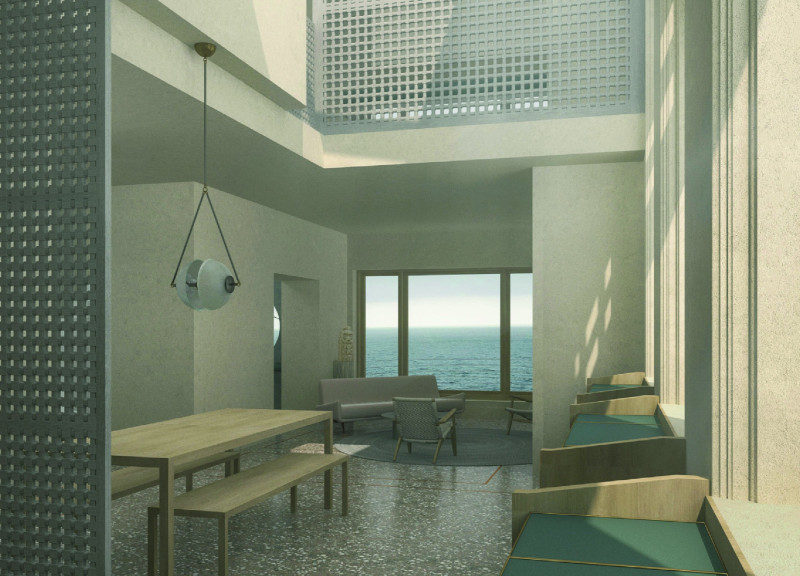5 key facts about this project
Functionally, the design is multifaceted, catering not only to the immediate demands of its purpose—whether it be residential, commercial, or educational—but also enhancing the social fabric of the community. The architect meticulously crafted spaces that encourage interaction and collaboration, creating environments where individuals can engage meaningfully with one another and with the surroundings. This thoughtful approach is evident throughout the design, ensuring that each area serves its intended function effectively while promoting a sense of belonging and connectivity.
The architectural design incorporates a variety of important elements that contribute to its overall character. The layout features open floor plans that maximize natural light and promote flexible use of space. This design choice encourages a fluid movement between different areas and allows users to adapt each space to their needs. The integration of large glass facades invites the outside in, blurring the boundaries between interior and exterior spaces. This design not only enhances the aesthetic quality of the project but also establishes a strong visual connection to the landscape, which is especially important in a setting that values its natural surroundings.
Unique design approaches are inherent within the architecture, notably in the way materials are selected and employed. A careful consideration of sustainability permeates the project, with the use of reinforced concrete for its robustness alongside the warmth of natural materials such as wood and stone. Each material serves a dual purpose of aesthetic appeal and functional utility, resulting in a cohesive design that feels grounded yet modern. For instance, the wooden elements provide a tactile contrast to the more industrial materials, creating a balanced dialogue that resonates throughout the building.
Moreover, the project incorporates innovative sustainability features, such as solar panels, rainwater harvesting systems, and green roof technology, which collectively contribute to its environmental resilience. These features reflect an awareness of the pressing need for architectural practices that mitigate ecological impacts while promoting energy efficiency. The design not only respects but actively engages with the local ecosystem, paving the way for a more sustainable future while serving its users’ needs.
The landscaping surrounding the building further enhances its integration into the locality. Thoughtfully designed outdoor spaces and pathways encourage leisurely exploration and interaction with nature, which are essential aspects of creating a holistic environment. The project’s physical form and the surrounding landscape work in tandem, fostering a place where the community can gather and enjoy their surroundings.
In looking closely at the architectural details, one can observe how the interplay of form and function is meticulously balanced throughout the design. Particular attention is given to lighting design as well, creating areas that are not only functional but also inviting and comfortable. These details are critical in ensuring that the architecture remains user-focused while also embodying the vision of modernity and connection to place.
This architectural project is a clear illustration of how contemporary design can echo the cultural and environmental context it inhabits. A commitment to thoughtful design and an understanding of community needs set this project apart, making it a valuable addition to its locale. For those interested in a deeper understanding of the architectural ideas and elements that inform this project, exploring the architectural plans, sections, and overall design can provide additional insights into its thoughtful execution and the intentions behind its creation.


 Kristopher Musumano,
Kristopher Musumano,  Chen Xia,
Chen Xia,  Kevin Musumano
Kevin Musumano 




















